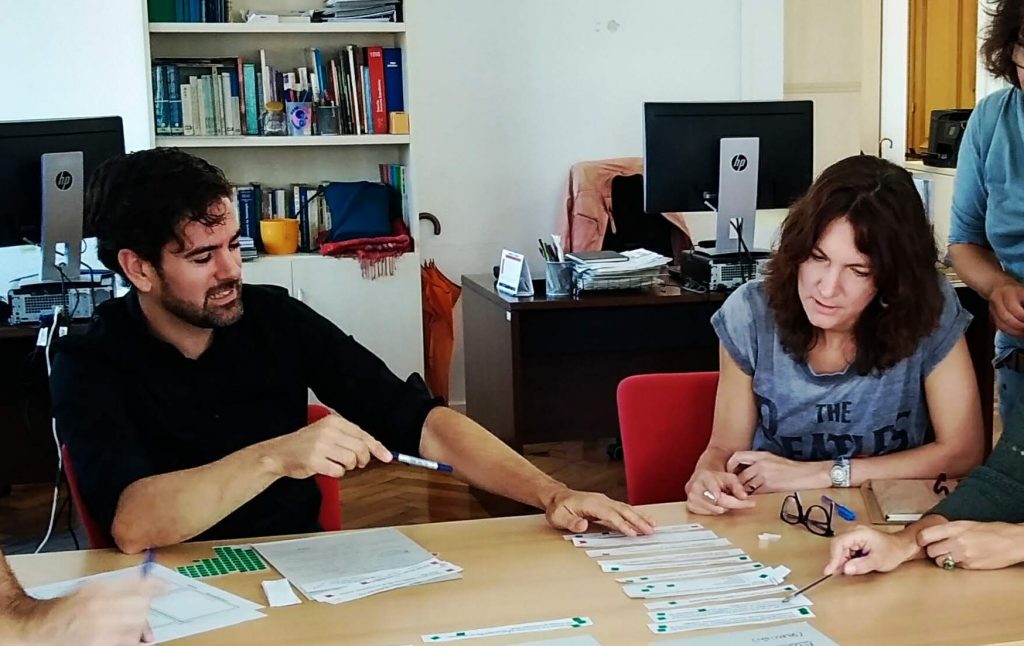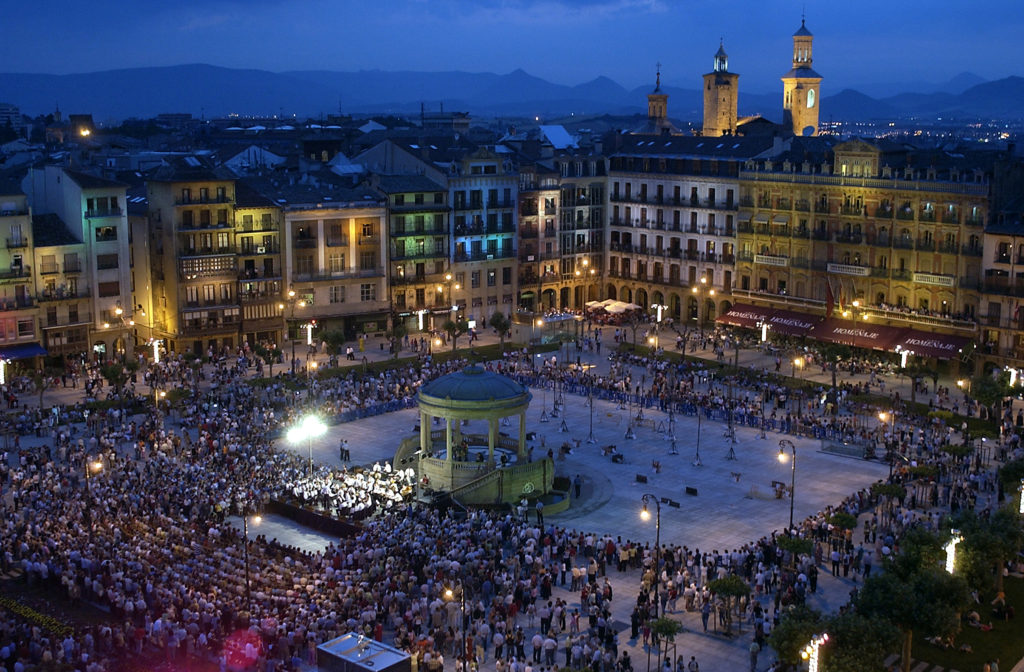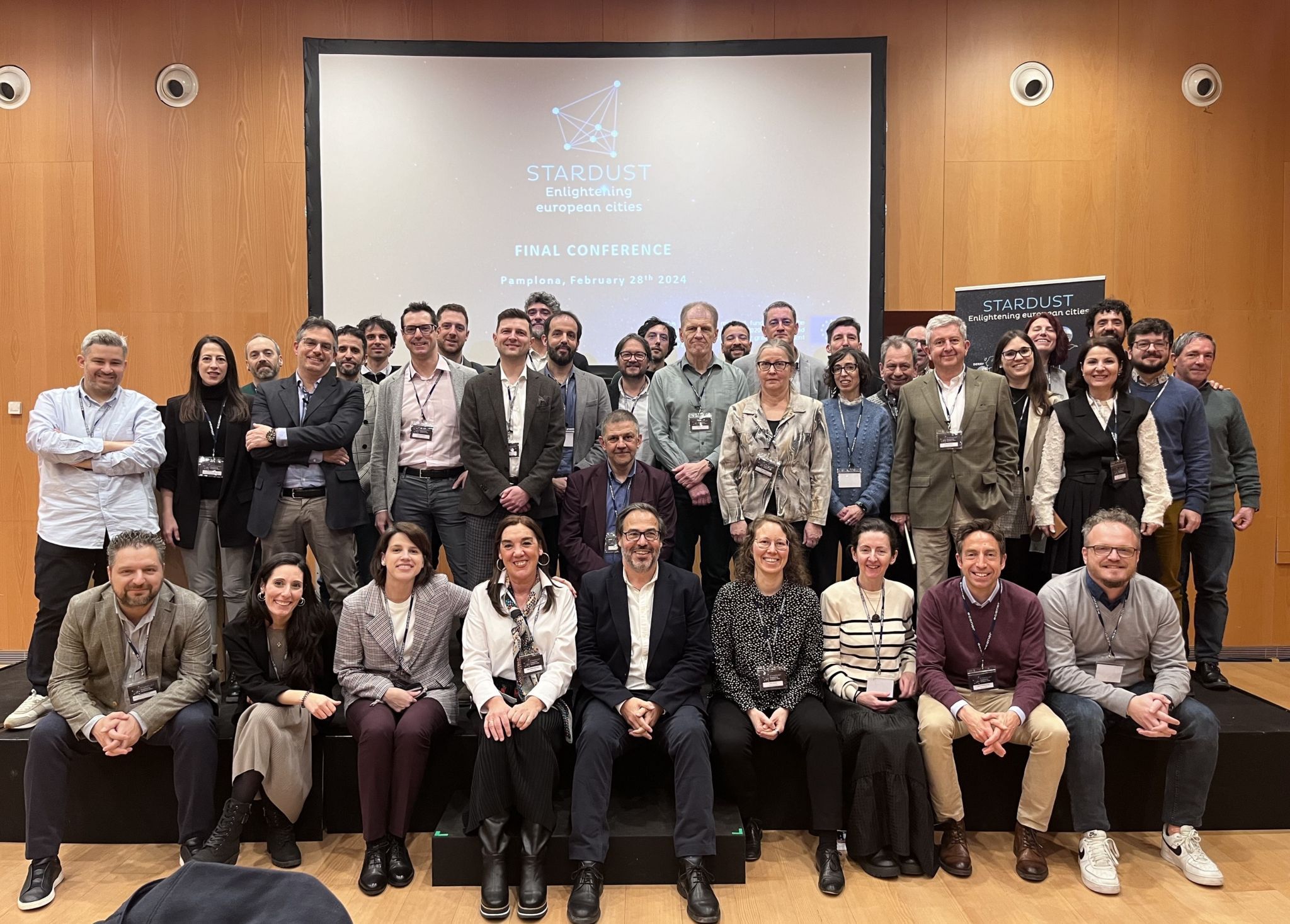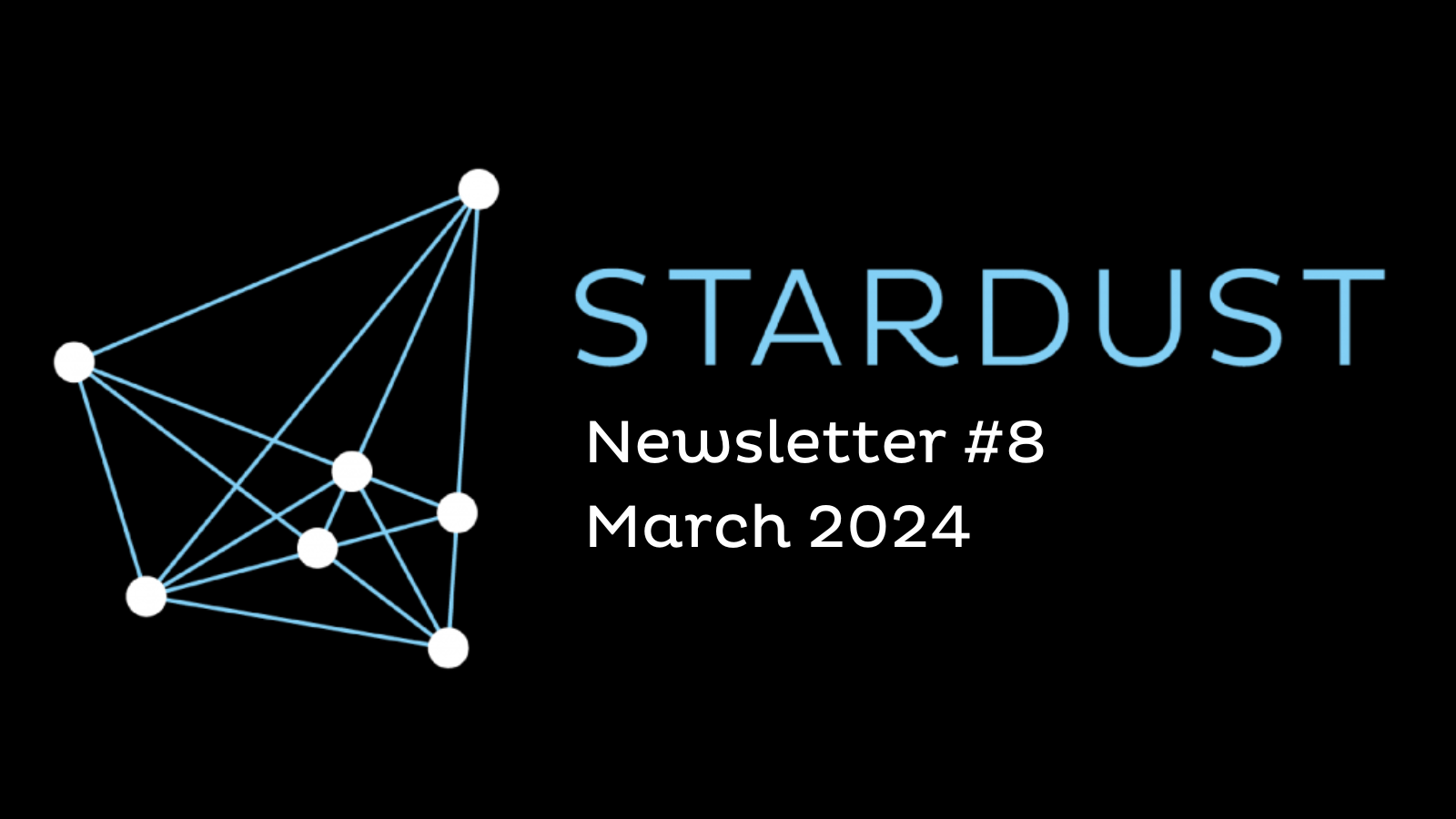Worldwide, Pamplona is often associated with the old tradition of the running of the bulls. But just few people are aware of its role as leading smart city in Spain.
Yes, that’s true. If we talk about smart city innovations, Pamplona has been a pioneering medium-size city in Spain. For example, we approved our Smart City Strategy back in 2012 and Pamplona was one of the founders of the Spanish Network of Smart Cities. Nowadays, smart city innovation is spreading quickly all over Spain. But through initiatives such as STARDUST, Pamplona will be able to keep its role as a frontrunner city in Spain’s smart innovation.
Concepts such as “Smart city”, “Smart innovation” and so on are often perceived as rather vague. Can you provide some tangible examples of what they mean, at least in Pamplona?
We can mention the five strategic dimensions of STRATEGY 2030, Pamplona’s Urban Strategic Plan: urban sustainability, climate and mobility; social inclusion; innovative public management; culture and sustainable tourism, and knowledge economy and innovation. These are all tightly connected to key challenges faced by the city and they identify the main areas where we are intervening with a smart innovation approach.

And such interventions would be in line with the EU Green Deal and its goal to make Europe climate neutral in 2050, right?
Yes, correct; we can say we are quite much in line! On top of STRATEGY 2030, Pamplona also signed the Covenant of Mayors in 2009 and renovated its commitment in 2020 with 2,030 climate goals. And we shouldn’t forget that Pamplona is preparing its Energy Transition Strategy for 2030 as well!
Right, energy transition is indeed a central part of Pamplona’s strategy, and that’s why most of your actions in STARDUST focus on renewable energy sources, also known as RES. No wonder, after all, if we consider that the Navarra region itself is a pioneer in RES and it is home to the STARDUST coordinator CENER, the Spanish National Renewable Energy Centre.
Fostering the adoption of RES is definitely the main focus of STARDUST here in Pamplona. I can mention some examples of the actions we are carrying out, such as the installation of fast-charging stations for taxis or the so-called “plug&play” roof on the city police building. This roof, in particular, is completely modular and it includes a number of building-integrated photovoltaic panels, which will provide the building with clean energy for self-consumption. And among the main examples we shouldn’t forget our smart grids, of course!
Can you say a few words on that too?
For us a smart grid is a grid with a brain! Basically, a grid able to take the best decisions in the management of energy. For example, it decides when it is the best time to use the energy that is being produced with the photovoltaic panels or to store it in batteries or electric vehicles. All this is made possible by dedicated software and other IT solutions. But we need to analyse the grid in detail first. Energy production, consumption, network supply, storage capacity, costs, and energy usage by electric vehicles and so on: only once we have this data we can set our goals, such as providing cheap energy or maximising the use of renewable energy, and then design the best strategies to achieve them.
Speaking of electric vehicles, e-mobility is yet another sector in which your city has been a pioneer in Spain.
Absolutely, the development of clean, electric mobility has always played a central role for us. We approved our e-mobility plan back in 2010 and we even tested an e-car-sharing system for several years. Unfortunately, e-mobility did not take off as fast as we had hoped back then, probably because key players such as industry, governments and citizens were not ready then. However, the situation has changed quickly and society is now ready to give e-mobility that necessary push to grow.
And how are you fostering this process?
Through a number of different actions, such as the deployment of new e-buses and, as part of STARDUST, via the installation of 26 charging points for e-cars on the streets and the possibility of connecting the e-buses and other e-vehicles to our smart grid at the local university campus. You know, in Pamplona the transport sector is responsible for the 55% of CO2 emissions. We want to reduce such emissions by 25% via e-mobility.
Another aspect you focus on is the engagement of local companies, via initiatives such as the Smart Iruña Lab. Can you say something more about this?
The Smart Iruña Lab is a very interesting and innovative programme, also organised as part of STARDUST. Basically, we offer local companies such as start-ups the opportunity to test in real conditions, thus not only on a laboratory scale, their innovative products and services for smart cities, prior to bringing them to the market. We give them public space, buildings and infrastructure, as well as feedback and visibility on media and at events. Between 2018 and 2019 we organised the first edition, with five innovative solutions being tested, and in February 2020 we launched the second edition of the programme.
And then we have the Navarra LANParty.
Yes, basically the Navarra LANParty is a meeting point for all technology and ICT enthusiasts in Pamplona. Its pillars are the coexistence and collaboration of the participants via mutual exchange of experiences and lessons. Together with another STARDUST partner, namely the Public University of Navarra, the Pamplona City Council supports this event and in the last two editions organised a Hackathon. In particular, the Hackathon in 2019 was dedicated to the development of new use cases for the City App which the City Council and the University of Navarra are designing within STARDUST.
Right, the app you are developing is yet another interesting service you will make available to your citizens.
Correct, the app includes integrated and geo-referenced information of city infrastructure such as parking lots, e-charging devices for electric vehicles and public transportation to offer detailed alternative routes for citizens, public bike booking, and mobility management related to leisure and cultural events. And, very importantly, new services could be developed by third parties with the collected open data using the open city platform.
After all, as stated on its website, the Navarra LANParty must “not only integrate the participants, but also all citizens, since together we must continue down a path of discovery and learning about the new information society that is already a reality in people’s daily lives”.
And our citizen engagement strategy goes even further. For example, we have the Sustainable Behaviour Change Gaming Tool, which will be used in schools. Basically, students and teachers will play it and learn how to save energy at their schools. The City Council then pledges to invest 50% of the total energy costs saved in equipment for the schools implementing the game.
So, it seems smart city innovation is underway in Pamplona, but there are probably some barriers along with way.
I’d say we have two main kinds of barriers. One is the financing of the smart solutions. We already know that smart solutions can lead to big money savings, but in general they need high initial investment that a municipal economy cannot cover without external support. The second one is the cultural change. Public authorities tend to be very risk-averse organisations. But to be innovative, we need to take risks and leave our comfort zone.
This interview was conducted with Jose Costero and Leire Iriarte Oyaga from the Urban Strategies Office of the Pamplona City Council.


